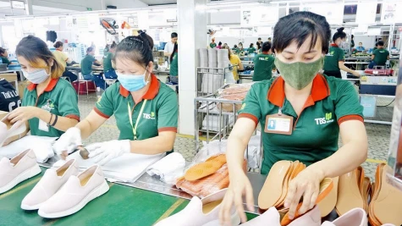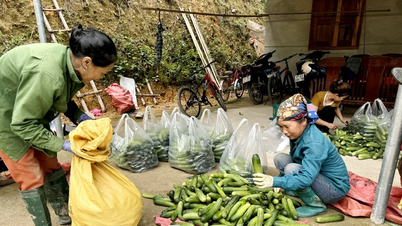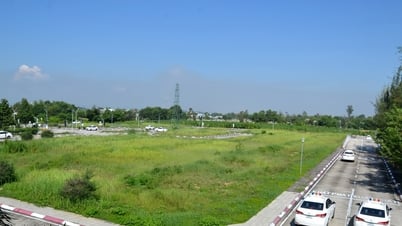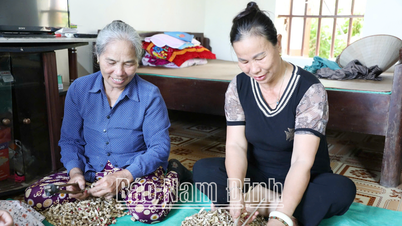 |
| The agricultural export capacity of Lam Dong province in particular and Lam Dong after the merger is very abundant, but to reduce the impact of tariff barriers, it is necessary to focus on finding new export markets and increasing domestic consumption. |
According to Mr. Luong Van Tu - former Deputy Minister of Trade (now the Ministry of Industry and Trade ), the world order is no longer in the hands of a country or a group of countries called superpowers... so many forecast the risk of a trade war not only between the United States and China but globally, when the United States imposes a 10% tax on all countries and reciprocal taxes for the reason of causing a trade deficit. In 2024, the United States imported about 2,700 billion USD of goods and exported 1,700 billion USD, meaning a trade deficit of 1,000 billion USD. Meanwhile, the United States does not count their trade surplus in services, investment and intellectual property to other countries. The Prime Minister of Singapore in his speech to parliament said this is unfair and unjust when Singapore is having a trade deficit with the United States...
In addition, the world is moving into a period of unpredictable instability, when the conflict between Russia and Ukraine has not ended; the Middle East conflict between Israel and Iran, Yemen, Palestine continues; the world economy is declining; the 4th Industrial Revolution with AI technology, creating high labor productivity but the risk of job loss is great... (according to Elon Musk, in the next 2 decades, 300 million people will lose their jobs, but will create 350 million new jobs that must be trained to meet new technology) is not a small challenge...
After decades of prosperity, the United States began to enter a difficult period, with rising public debt and the dominant role of the US dollar decreasing... On April 4, 2025, the US President signed a decree on symmetrical tariffs with over 70 countries and territories. Of which, Vietnam is subject to two types of tariffs, a 10% import tax on all goods imported into the United States; a 46% reciprocal tax on the grounds that Vietnam has a trade surplus of over 100 billion USD with the United States and is temporarily postponing the application for 90 days pending negotiations.
In Lam Dong province alone, in 2024, the total export turnover is 985 million USD, an increase of 6.1% compared to 2023. Of which, coffee is 226 million USD; garment is 28.18 million USD; alumina & hydroxide is 288.3 million USD; vegetables, tubers, fruits are 31 million USD; fresh flowers are 2.1 million USD; tea is 0.2 million USD; silk is 0.1 million USD. The two export items to the United States that are most affected are garment and coffee (100% of garment exports are to the United States, part of coffee is exported to the United States and the majority is exported to Europe and other countries).
According to the policy of merging administrative units, Lam Dong will have Dak Nong and Binh Thuan, with export turnover of 1,045 million USD (Dak Nong, mainly including 2 products of alumina and coffee; coffee alone accounts for 28% of export turnover with 292 million USD); and 791 million USD (Binh Thuan, seafood export 225 million USD, the rest is wooden furniture, garment, dragon fruit...).
Thus, 4 new products of Lam Dong province will be directly affected by the US reciprocal tax policy: coffee, garment, wooden furniture and seafood. In particular, the coffee output of Lam Dong and Dak Nong reached 946 thousand tons out of the total national output of 1,956 thousand tons; in 2024, the whole country exported 1.4 million tons of coffee, of which 77 thousand tons were exported to the US with a 0% tax rate, from April 9, 2025, they will be subject to a tax of up to 10%. Currently, Vietnam is waiting for the results of negotiations to see how much the official reciprocal tax rate will be...
Mr. Luong Van Tu also suggested solutions for Lam Dong enterprises in particular and for Vietnamese enterprises exporting goods to the United States in general: For coffee and seafood, if the corporate tax rate cannot be reduced to a level where export enterprises can still make a profit or break even, Vietnam should shift its market to Eastern Europe (Eurasian Economic Union), BRICS (Brazil, Russia, India, China, South Africa, UAE, Egypt, Iran, Ethiopia and Saudi Arabia) and find new markets such as Algeria, Australia, New Zealand, ASEAN countries... For garment and wood products, increase the localization rate to 32% to be recognized as Vietnamese products. Vietnam needs to innovate technology and improve skills, improve management level, reduce costs to enhance competitiveness; propose the Government to support the reduction of land rent tax and corporate tax to overcome difficulties; at the same time, promote the production of domestically consumed goods, solve jobs for unemployed workers...
Source: https://baolamdong.vn/kinh-te/202505/thach-thuc-thue-quan-trong-xuat-khau-hang-hoa-tu-lam-dong-sang-hoa-ky-06e3ce4/




![[Photo] Prime Minister Pham Minh Chinh attends the groundbreaking ceremony of Trump International Hung Yen Project](https://vphoto.vietnam.vn/thumb/1200x675/vietnam/resource/IMAGE/2025/5/21/ca84b87a74da4cddb2992a86966284cf)
![[Photo] Prime Minister Pham Minh Chinh receives Rabbi Yoav Ben Tzur, Israeli Minister of Labor](https://vphoto.vietnam.vn/thumb/1200x675/vietnam/resource/IMAGE/2025/5/21/511bf6664512413ca5a275cbf3fb2f65)
![[Photo] Determining the pairs in the team semi-finals of the National Table Tennis Championship of Nhan Dan Newspaper](https://vphoto.vietnam.vn/thumb/1200x675/vietnam/resource/IMAGE/2025/5/21/eacbf7ae6a59497e9ae5da8e63d227bf)



























































































Comment (0)